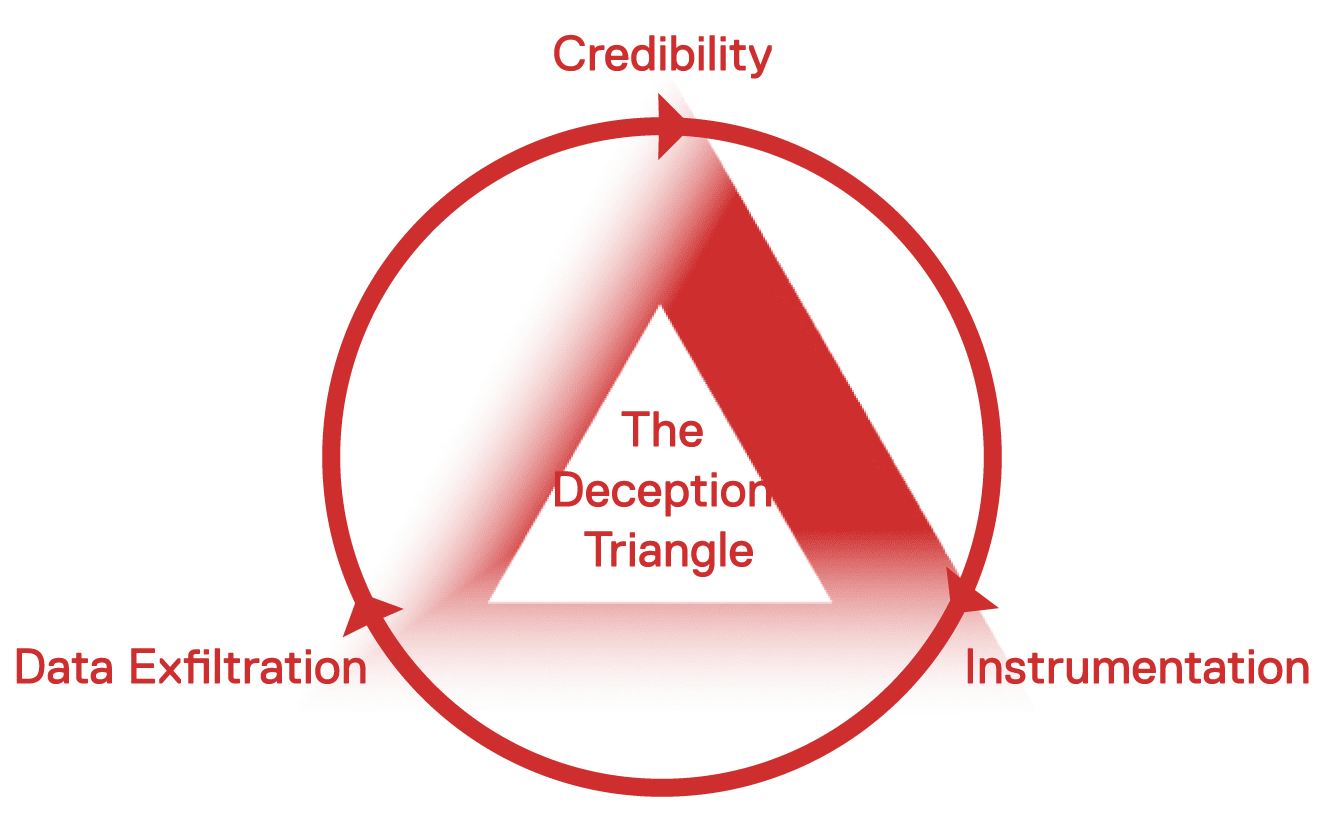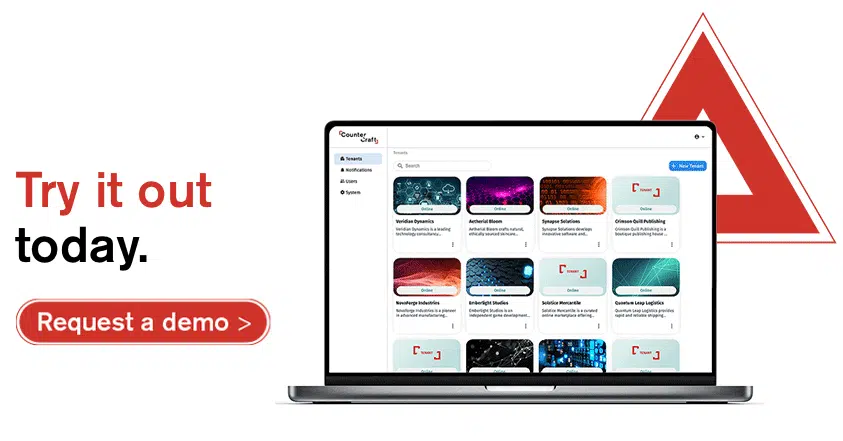Cloud identity is today’s blast radius, and advanced persistent threat (APT) groups are exploiting it at scale. With Microsoft Entra ID now sitting in front of most enterprise logins, 80% of breaches still begin with a stolen, mis-scoped, or replayed credential. CounterCraft answers by deploying high-fidelity digital-twin decoys of Entra ID, M365, and Azure workloads. These digital twins lure APT operators into fully instrumented decoy environments and stream real-time threat Intelligence straight into your SIEM, XDR, and SOAR. Result: sub-minute detection, up to 90% fewer false positives, and board-grade metrics that turn compliance pressure into demonstrable risk reduction.
Why is Entra ID a Prime Target for Advanced Persistent Threats?
Think of Microsoft Entra ID (formerly Azure Active Directory) as the master key to the enterprise castle: once copied, attackers can wander anywhere they wish. That reality has turned Microsoft’s identity cloud into the most coveted target for APTs.
Azure AD tops every cloud hit list. A June 2025 threat landscape review of real incidents ranks credential replay, stolen refresh tokens and the emerging “pass-the-P2P-cookie” technique as the three fastest-growing identity attacks against Azure AD tenants.
Nation-state actors exploit OAuth tokens issued by Microsoft Entra ID (formerly Azure AD). Microsoft’s January 2024 Midnight Blizzard investigation detailed Russian APT activity that chained on-prem footholds to hijacked OAuth tokens, gliding into cloud tenants unnoticed.
Exploit velocity has gone ruthless. By July 2025, Chinese APT groups Linen Typhoon and Violet Typhoon weaponized two just-disclosed SharePoint flaws in under ten days, then leveraged the access to harvest Azure AD privileges.
By the time legacy tools flag a suspicious sign-in, the adversary has minted fresh tokens, joined privileged groups, and started siphoning data. In short, defenders are chasing footprints while the attacker is already leaving the building.
Why Do Traditional Cloud Indicators Fail to Detect APTs?
Threat feeds work like traffic reports: useful only if the accident is still there when you reach the intersection. In the cloud, that window is razor-thin. The 2024 SANS Detection & Response survey found that 80 percent of IP- and domain-based IoCs disappear from telemetry within ten days, and nearly half go dark in less than forty-eight hours.
Here’s why:
- Ephemeral cloud infrastructure. APT operators rent short-lived Azure or AWS instances, burn them for a single credential-spray run, then scrap them before reputational blocklists update.
- Token abuse over IP reputation. OAuth refresh tokens and cookies travel with the attacker, bypassing geo-filters and making IP-based indicators almost meaningless. Microsoft’s Midnight Blizzard case showed Russian APTs pivoting from on-prem to cloud tenants using hijacked tokens, not hard-coded IP ranges.
- Residential proxy camouflage. Services marketed to scrapers hand attackers millions of rotating home IPs; Trend Micro’s 2025 research report calls them a “cyber-crime force multiplier.”
Insight from one of CounterCraft’s product experts sums it up:
“Attackers reuse anything that still works. Old hacks from twenty years ago still pay the bills, but they deliver them through infrastructure that evaporates in hours.”
APT crews, he adds, “run like well-funded start-ups shipping new infrastructure by the sprint.” Generic feeds can’t iterate that fast, leaving security teams to chase stale artefacts while live attackers probe the next gap. CounterCraft’s digital-twin deception flips that script by watching APTs in real time, generating indicators the moment they appear before the tokens, IPs, or domains vanish.
How Does Digital-Twin Deception Work in Microsoft Entra ID and Azure Environments?
Imagine drafting a movie set so authentic that even the lead actor forgets he’s acting; that is the goal of CounterCraft’s digital-twin deception for Microsoft environments. The platform clones an organization’s Entra ID in painstaking detail with specialized ready-built campaigns which include: directory objects, conditional-access rules, service-principal secrets, and more. Around that core, it stages convincing M365 mailboxes, SharePoint sites, Defender for Endpoint alerts, and even Entra-registered devices, each laced with sensors invisible to attackers.
Credibility, instrumentation, and exfiltration: that’s the deception triangle. If the twin looks real, is fully wired for telemetry, and offers something worth stealing, advanced persistent threats have no reason to doubt the illusion. Click here to read more on the difference between cyberdeception and honeypots.
How the capture works
- Microsoft Graph hooks record every query, user look-ups, token requests, and privilege changes with millisecond time stamps.
- PowerShell tracing logs cmdlet arguments, execution context, and parent processes, providing ground truth for live hunt teams.
- Token telematics note JWT claims, refresh cycles, and originating IP ranges, data most SIEMs never see in real time and with context.
All events stream through CounterCraft’s enrichment engine, are mapped to MITRE ATT&CK tactics and techniques, and within seconds, export in STIX or JSON to whichever SIEM, XDR, or SOAR platform your team already runs. According to Gartner’s 2025 Emerging Tech Impact Radar, organisations that pair identity deception with live ATT&CK mapping “shorten incident triage by a median 43%.”
Why it matters: Most Active Directory compromises hinge on subtle identity drift, an unnoticed role assignment, or a single over-privileged token. The digital twin surfaces those manoeuvres instantly, turning them into organization-specific threat intelligence while the real tenant stays untouched. CounterCraft’s field data shows this approach eliminates false positives and provides the intelligence compliance teams needed to support their board-level evidence to align to prevailing legislation mandates.
How Does CounterCraft Turn Decoys into Real-Time APT Detection?
When a suspected APT brushes against a CounterCraft twin, the response shifts from human speed to processor speed. The moment APT tooling probes what it believes is Azure AD or Outlook, embedded sensors light up, silently tracking every move. As the interaction unfolds, CounterCraft enriches and maps each event in real time. Every packet, PowerShell cmdlet, and token is tagged, scored, and aligned to the appropriate MITRE ATT&CK tactic, creating a detailed threat picture.
Fresh, organization-specific indicators of compromise (IoCs) are then automatically exported as STIX, JSON, or syslog, ready to be ingested by any standards-compliant threat intel feed. Your SIEM or threat intelligence platform immediately evaluates the confidence level of these deception-sourced alerts, prioritizing them and pushing them to the top of the analyst queue. From there, XDR or SOAR systems execute automated responses at wire speed—quarantining endpoints, revoking tokens, and inserting malicious IPs into blocklists before the attacker has a chance to pivot.
IBM’s 2024 Cost of a Data Breach report pegs the global average at USD 4.88 million; every extra hour of unseen APT activity inflates that figure. CounterCraft’s real-time deception telemetry not only flattens the cost curve but also helps organisations meet the SEC’s new cyber-disclosure timelines and Europe’s forthcoming DORA resilience mandate.
Implementation Roadmap for Entra ID APT Defense
Follow these five steps to bring digital-twin deception online and keep it razor sharp over time:
- Map identity attack paths. Trace how Entra ID roles and service principals reach crown-jewel apps such as ERP, finance, and customer data. Prioritize paths with the most privilege drift.
- Deploy lifelike digital twins. Spin up Azure-hosted decoys seeded with believable credentials, SharePoint sites, and mailbox chatter so APTs commit fully to the lure.
- Auto-export intelligence. Stream STIX or JSON directly into Microsoft Sentinel, Splunk, or any other SIEM/XDR stack to ensure deception alerts land where analysts already live.
- Reweight correlation logic. Elevate deception-sourced indicators to a ≥ 90 percent confidence score so they bypass generic feed noise and trigger SOAR playbooks instantly.
- Refresh the storyline. Review telemetry weekly; rotate tenant names, credentials, and lure content at least quarterly to stay ahead of reconnaissance and keep attackers guessing.
CounterCraft The Platform: Specific, Actionable Threat Intelligence for Microsoft Clouds
CounterCraft The Platform delivers specific, actionable, real-time threat intelligence powered by deception. It spins up high-fidelity digital-twin campaigns that mirror your Entra ID, M365, and Azure workloads, then lures advanced persistent threats away from production, keeping essential data and systems safe while revealing every step of the attack. The crystal-clear telemetry integrates natively with any SIEM, XDR, or SOAR stack through STIX, JSON, or the Platform’s REST API, and dashboards convert those signals into audit-ready evidence for NIS 2, DORA, and ISO 27001. Learn more about how deception secures the cloud.
The platform enables proactive APT detection specifically targeting Azure AD and Microsoft cloud environments. Its real-time telemetry shortens the window for lateral movement, while eliminating false positives so lean SOCs can focus on what matters. It also delivers board-grade insight that not only proves ROI but also streamlines regulatory reporting. By trading stale indicators for fresh, Microsoft-specific threat intelligence, organizations can stay ahead of APTs.
Trade stale feeds for fresh, Microsoft-specific threat intelligence. Book a personalized CounterCraft demo to learn how a digital twin can trap APTs in real time and transform live attacker actions into measurable threat intelligence.
Five Takeaways
- Azure AD (Entra ID) is the preferred cloud beachhead for APTs.
- Traditional IoCs lose relevance in less than 48 hours.
- CounterCraft digital twins convert live APT activity into high-fidelity Threat Intelligence.
- Machine-speed exports slash dwell time and the regulatory fines tied to it
- Deploy in a single sprint for most use cases and demonstrate ROI in weeks, not quarters.


